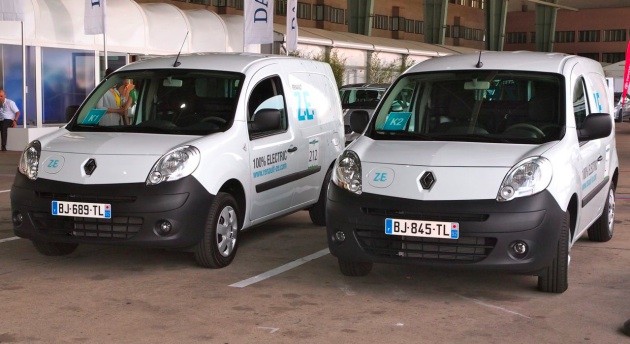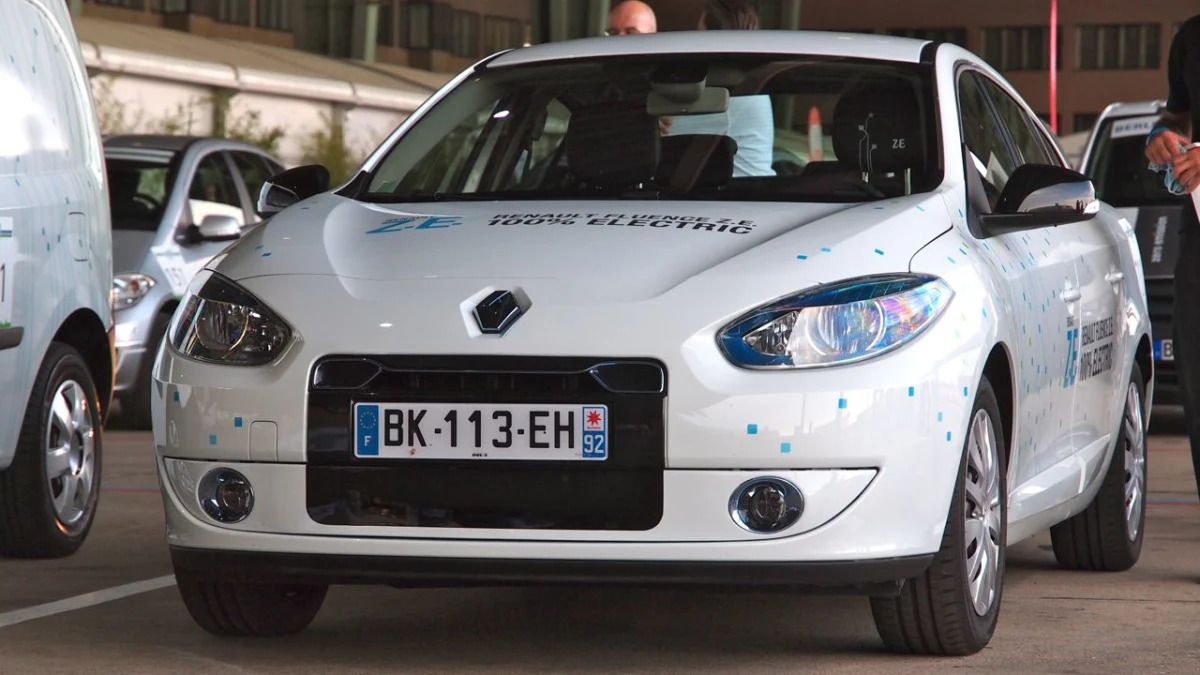Renault Fluence Z.E. – Click above for high-res image gallery
Here's something you probably already knew but haven't really thought about: Renault has announced more electric vehicle models than Tesla Motors, and Tesla is a company that makes nothing but electric cars. Compare the Tesla Roadster, the Model S and the Model X SUV to Renault's four-car line-up: Twizy Z.E., Zoe Z.E., Fluence Z.E. and Kangoo Z.E. With this interesting little tidbit in hand, at the 2011 Michelin Challenge Bibendum in Berlin last week, we heard how Renault's plans for sustainable mobility go much, much further than four electric cars.
Alice de Brauer, Renault's vice president of environment strategy for all Renault Brands (Renault, Dacia and Renault-Samsung Motors) explained how Renault has been working on green efforts since 1995, emphasizing thinking about CO2 emissions and climate change in 1996. The company made a public commitment in 2006 (PDF) to sell a million vehicles with average CO2 emissions below 140 grams per kilometer (and 100,000 of those under 120 g/km). More recently, the company announced its Renault 2016 - Drive the Change strategic plan, which calls for reducing the brands' global carbon footprint by 10 percent from 2010 standards by 2013, and then another 10 percent reduction from 2013 levels by 2016, all while continuing to increase sales. De Brauer called the new challenge "very difficult, very difficult," but said that Renault has "a very deep commitment." The first step needed to address the problem was to find a way to honestly calculate the company's entire global carbon footprint. Once it did, Renault became the first automaker to be able to do so. She further told AutoblogGreen:
Renault is attacking energy use on many fronts, from the Eco2 line to, of course, electric vehicles. De Brauer said that plug-ins offer an great chance to educate the public about lifecycle environmental impact assessment, "because you have a debate around electric cars. You have the discussion about 'Zero Emission,' but it's not zero emission when you have to produce the energy using fossil fuels." We got to test out two of Renault's four EV models in Berlin, and you can read about them after the jump.When you are in Europe, or the U.S. or Japan and now Korea, you have measurements and standards for fuel consumption and CO2. You have different methods between Europe and the U.S., but you have standards. But when you have a lot of countries without [these standards], when you commit to a target like this, you have to compare your target with the quality of fuel in these countries and many other things. So, the challenge is doubled.
Photos by Sebastian Blanco / Copyright ©2011 AOL
Driving the Fluence Z.E.: Big EV, Big Easy
Compared to the Nissan Leaf, Think City and the Mitsubishi i, the Fluence Z.E. is a big car. Renault has done an admirable job of keeping the whole thing feeling light and easy to drive thanks to a light steering wheel and the immediate torque of the electric motor. There may be a 400-kg battery pack in the rear of the big sedan, but you don't feel it from behind the wheel. The car also doesn't feel as big as it is – at least, not on the wide-open Tempelhof runway. When trying to get into a parking space, it's another story.
Who cares how it parks? We were there to drive, and the Fluence delivered. At highway speeds, you can most certainly hear the motor spinning and plenty of wind moving about the car, but who doesn't think that Renault will get this sound dampened before the production version hits the streets? Currently, the "driving feedback" indicator is a simple needle, where 12 o'clock on the dial means you're driving in the most economical manner. The needle shows that the car offers moderate regen when you lift your foot from the pedal; this fits with the overall vibe we got that this will be an easy vehicle to drive.
Renault representatives told us that the interior is one part that will be changed before the electric version of the Fluence goes into production. A GPS/navigation system will replace the plastic insert that currently serves quite well as a placeholder. As far as the drivertrain goes, what we saw in Berlin is the unit that Renault will start producing later this year.

Renault Kagoo
Our time behind the wheel of the Kangoo was more of an eco-driving test than anything else, and we did two loops to see how our driving style could improve. With no low-speed creep or harsh regen in the Kangoo Z.E., every bit of forward movement is controlled by your right foot. We were careful – not too careful – during the first loop to see what "average" driving could get us from the van's 22kWh lithium-ion battery pack. On that first trip, the results (see 'em here) showed us we drove in a style that would offer us 139 kilometers (86 miles) on a full charge. On trip two, when we were more conscious, we established a 185-km (115-mile) range potential. We certainly weren't hypermiling, just following the eco-driving trainer's advice that the most efficient EV driving is one with no regenerative braking. Ever. After all, all regen is doing is trying to reclaim some of the extra energy you spent to move. It's a good analogy to how Renault is looking everywhere to make itself and its cars more efficient.
Our travel and lodging for this media event were provided by Michelin.



Sign in to post
Please sign in to leave a comment.
Continue